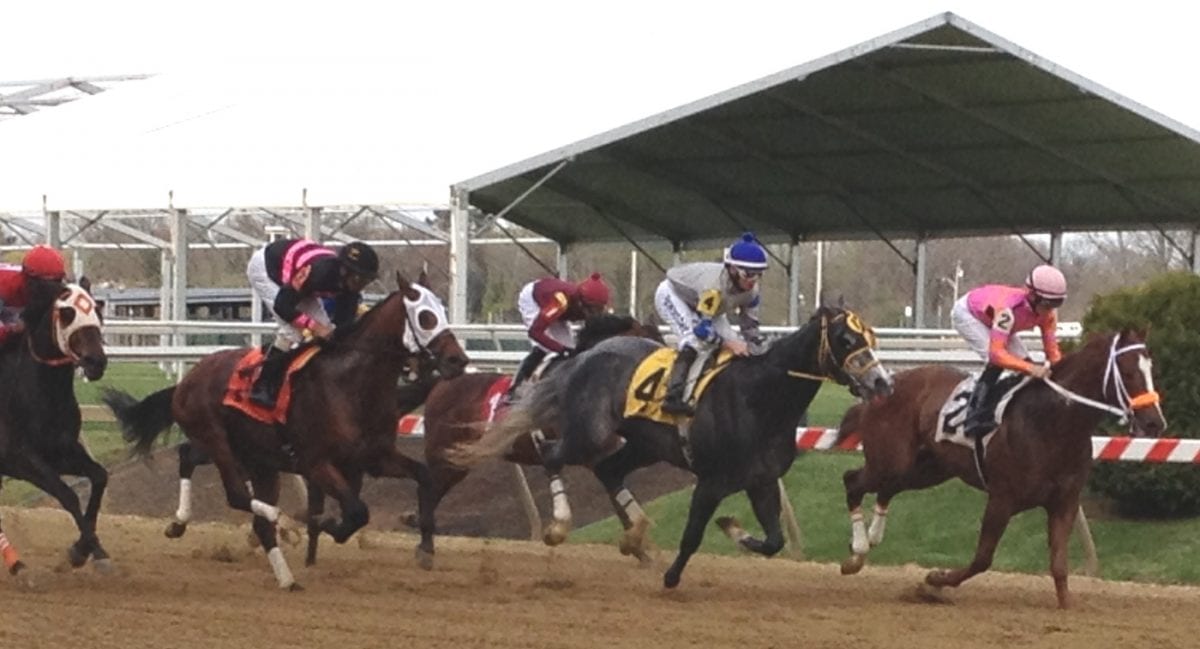by Frank Vespe
It’s not exactly a secret that horsemen, breeders, and racetracks don’t always see eye-to-eye.
The ongoing spat between Colonial Downs and Virginia’s horsemen and breeders — covered extensively in these pages — is just one example. There are many more.
Which is why it was so surprising to receive, the other day, a letter adorned by the logos of the Maryland Thoroughbred Horsemen’s Association (MTHA), Maryland Horse Breeders Association (MHBA), and Maryland Jockey Club.
That this is unusual is not lost on the letter’s three signatories, MTHA President Richard Meyer, Maryland Jockey Club President Tom Chuckas, and MHBA President Josh Pons. Indeed, it is, the letter informs us, “a display of unity that signals a new spirit among the thoroughbred community in Maryland.”
Turns out that the organizations are jointly co-sponsoring a fundraiser for the campaign of current Lt. Governor Anthony Brown and his running mate, Howard County Executive Ken Ulman for governor of Maryland.
Politics, strange bedfellows, etc.
Here in Maryland, the Democratic primary is widely considered the true race for Governor, and with good reason. Only one Republican, Robert Ehrlich, has earned the nod from voters to be Governor since 1969. Democrats outnumber Republicans by about 2-1.
Brown and Ulman both have ties to the racing industry. The administration of current Governor Martin O’Malley, of which Brown is part, has generally been perceived as friendly to Thoroughbred interests. What’s more, according to the letter, one of Brown’s early jobs was as a hotwalker at Aqueduct. And Ulman’s father, Lou, is a longtime member and former chair of the state Racing Commission.
“Both Anthony and Ken have repeatedly committed to protect the racing industry’s share of VLT revenues and actively work to strengthen our industry for future generations,” the letter notes, and there, indeed, is the crux of the matter.
While both Brown and his main rival for the Democratic nomination, Attorney General Doug Gansler, support the expansion of early childhood education, where they differ is on how to pay for it. Brown’s plan calls for putting aside a “specific allocation” of gaming revenues already going to education.
Gansler, on the other hand, has suggested that the likeliest approach would be to cap racing’s share of slots revenue at $50 million — one-half the current cap of $100 million — and put the rest into early childhood education. According to the Gansler campaign, that would make $22 million available for early childhood education in fiscal 2014.
And that proposal, said MHBA Executive Director Cricket Goodall, “really got people’s attention in the horse industry.”
Back in October — when the Gansler plan first came out — MTHA General Counsel Alan Foreman opined that it “just absolutely makes no sense.” And MTHA Executive Secretary David Richardson said that the effect of the cuts would be “devastating.”
“You look at what other states have gone through,” said Richardson in a conversation the other day, “and I don’t think we’re going to be any different.”
What other states have gone through, of course, is repeated efforts to reduce or eliminate racing’s share of gaming revenue. Most recently, West Virginia racing interests limited the damage of a proposal that still ended up reducing their funds by 10 percent. And Pennsylvania’s Thoroughbred and harness communities have seen more than $150 million in slots money originally meant for them redirected to other purposes in recent years.
That’s the fate that the Maryland’s Thoroughbred interests would like to avoid. The 10-year agreement they signed to govern racing is one step in that direction; electing like-minded candidates is another.
“It’s in our interest to have candidates who are aware of our impact on the state,” Richardson noted.
Goodall, channeling her inner Ben Franklin, added, “We hang together, or we hang separately.”
For more on the fundraiser, click here.








